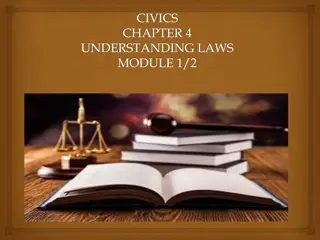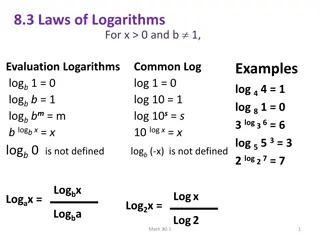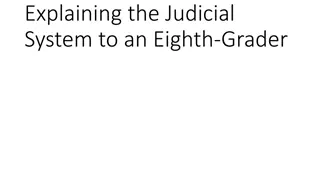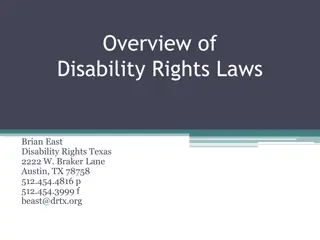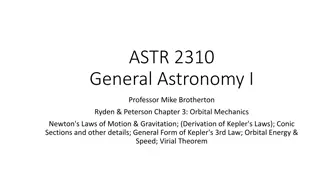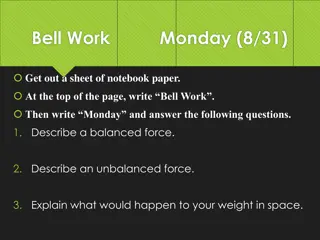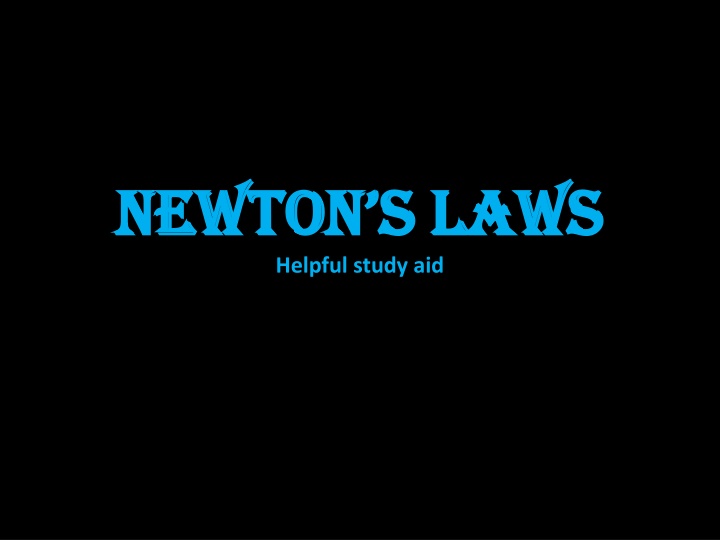
Newton's Laws of Motion: A Comprehensive Study Aid
Explore Newton's laws of motion with detailed explanations and visual aids. Discover Newton's 1st Law of Inertia, 2nd Law of Acceleration, and 3rd Law of Action and Reaction. Engage in interactive scenarios and animations to grasp these fundamental principles in physics.
Download Presentation

Please find below an Image/Link to download the presentation.
The content on the website is provided AS IS for your information and personal use only. It may not be sold, licensed, or shared on other websites without obtaining consent from the author. If you encounter any issues during the download, it is possible that the publisher has removed the file from their server.
You are allowed to download the files provided on this website for personal or commercial use, subject to the condition that they are used lawfully. All files are the property of their respective owners.
The content on the website is provided AS IS for your information and personal use only. It may not be sold, licensed, or shared on other websites without obtaining consent from the author.
E N D
Presentation Transcript
NewtoNs Laws NewtoN s Laws Helpful study aid
Newtons 1stLaw The Law of Inertia a body at rest remains at rest and a body in motion remains in motion with a CONSTANT speed and in a straight line, UNLESS acted upon by an outside force.
Newtons 1stLaw 2 parts Objects at rest Objects in motion
Newtons 1stLaw If at rest, they will continue in this same state of rest. If in motion with an eastward velocity of 5 m/s, they will continue in this same state of motion (5 m/s, East). If in motion with a leftward velocity of 2 m/s, they will continue in this same state of motion (2 m/s, left). The state of motion of an object is maintained as long as the object isnot acted upon by an unbalanced force. All objects resist changes in their state of motion - they tend to "keep on doing what they're doing. As the long as the forces are not unbalanced - that is, as long as the forces are balanced - the first law of motion applies.
Newtons 1stLaw Check out this link to Physics Classroom It gives scenarios Animations Full explanations Problems (if applicable) http://www.physicsclassroom.com/class/newt laws/Lesson-1/Newton-s-First-Law
Newtons 2ndLaw The acceleration of an object as produced by a net force is directly proportional to the magnitude of the net force, in the same direction as the net force, and inversely proportional to the mass of the object. Go to this site (very helpful!) http://www.physicsclassroom.com/class/newt laws/Lesson-3/Newton-s-Second-Law
Newtons 3rdLaw For every action, there is an equal and opposite reaction. The statement means that in every interaction, there is a pair of forces acting on the two interacting objects. The size of the forces on the first object equals the size of the force on the second object.
Newtons 3rdLaw Below is a link to visit for help with Newton s 3rdLaw http://www.physicsclassroom.com/class/newt laws/Lesson-4/Newton-s-Third-Law
Link for all 3 laws The link below is pretty tough, but it goes over all three laws. Check it out if you want a challenge http://hyperphysics.phy- astr.gsu.edu/hbase/newt.html




